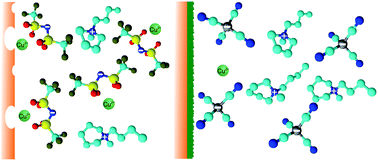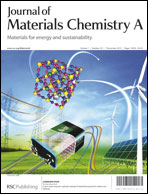Electrochemistry of copper in ionic liquids with different coordinating properties
Abstract
The electrochemical behavior of Cu was evaluated in two different ionic liquids (ILs) that had the same piperidinium-based cations but different anions with different coordinating properties: bis(trifluoromethanesulfonylimide) ([Tf2N]) (strong coordinating property) and tetracyanoborate ([B(CN)4]) (weak coordinating property). Cyclic voltammetry and electrochemical impedance spectroscopy showed that the electrochemical behavior of Cu depends strongly on these coordinating properties. In the strongly coordinating IL, Cu exhibits no passivation, but a passivating film is formed on the metal surface in the weakly coordinating IL. Scanning electron microscopy indicated that Cu suffered from pitting corrosion in the presence of the strongly coordinating IL. Raman spectroscopy elucidated the formation of a thin film of Cu2O in both ILs, due to the trace presence of H2O (below 70 ppm). In the [Tf2N]-based IL, a Cu salt forms with the IL as the potential increases, but it is not enough to passivate the metal due to the solubility of the salt in the IL. In the [B(CN)4]-based IL, even at lower potentials, a Cu[B(CN)4] layer is formed that passivates the metal.


 Please wait while we load your content...
Please wait while we load your content...